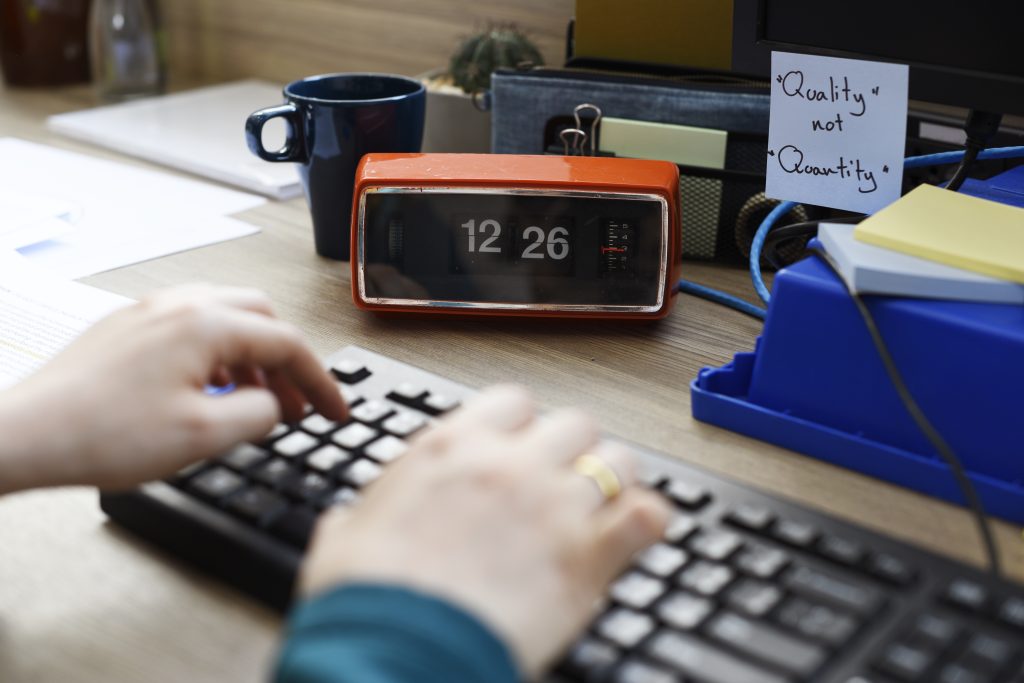The Case for More Input-Free Days
Aiden Foster July 23, 2025
In a world that’s constantly evolving with new information, technologies, and demands, it’s easy to get caught in a never-ending cycle of productivity. But in recent years, a growing movement has been advocating for the value of taking a break from constant input. From digital detoxes to simplifying our daily routines, the idea of input-free days is gaining traction.
But why should we embrace more input-free days? And how does stepping back from constant consumption lead to more creativity, better decision-making, and improved mental well-being? In this article, we’ll explore the compelling case for why reducing input in our lives is key to fostering deeper thinking, creativity, and emotional resilience.

What Are Input-Free Days?
Simply put, input-free days refer to intentionally carving out periods where we limit or entirely remove the consumption of external inputs—this can include media, social media, emails, news, or even intense work-related tasks. These days allow us to focus on reflection, self-care, and creativity without the distraction of constant information overload.
The premise behind input-free days is rooted in the idea that we often consume far more than we process. Our brains are constantly flooded with new data, but without time to reflect, we miss the chance to truly integrate and understand it. By removing the noise, we create mental space for insights, ideas, and deep reflection.
The Growing Trend: Why We Need Input-Free Days
In the modern age, we are increasingly addicted to our devices. Whether it’s scrolling through social media, checking emails, or binge-watching TV shows, we are bombarded with information 24/7. The temptation to stay connected and in the loop can make it difficult to disconnect. However, research suggests that this constant stream of input may be damaging to our creativity and well-being.
1. Information Overload: The Silent Creativity Killer
A phenomenon known as information overload occurs when we are exposed to more data than our brain can effectively process. According to a 2015 study by the University of California, excessive media consumption can lead to cognitive fatigue and reduced ability to retain information. The study showed that continuous exposure to irrelevant information negatively impacts decision-making skills.
When we’re constantly absorbing information, we often feel overwhelmed and struggle to synthesize the material. This overload can stifle creativity, making it harder to come up with fresh ideas or think outside the box. In contrast, input-free days allow for space to reflect, recharge, and approach problems from a clearer, less cluttered perspective.
2. The Role of Reflection in Creative Thinking
Creativity doesn’t just emerge from new information—it thrives when we have the time and space to process, question, and experiment with existing ideas. One key element of fostering creativity is reflection, a process that can only occur when we’re not constantly absorbing new data. Input-free days provide an opportunity to reflect, allowing creative ideas to emerge naturally.
Research from the University of Toronto shows that stepping away from constant input and creating mental space can lead to more innovative thinking. The study suggests that when we remove distractions, our brain can make new connections between existing knowledge, leading to creative breakthroughs.
3. Improved Mental Health and Emotional Well-being
Constantly engaging with the digital world has been linked to increased levels of stress, anxiety, and even depression. In fact, a 2017 study published in Computers in Human Behavior found that excessive social media use can lead to feelings of inadequacy, loneliness, and increased stress. The constant comparison to others and the overload of information can be mentally exhausting.
By introducing more input-free days, we give our minds a chance to reset. With fewer digital distractions, we can reconnect with ourselves and focus on things that truly matter, such as our goals, relationships, and well-being. This helps reduce stress, prevent burnout, and improve overall emotional health.
How to Implement Input-Free Days in Your Routine
If the idea of a fully input-free day seems daunting, start small. You don’t need to remove all input at once. Here’s how you can begin:
1. Create Clear Boundaries Around Technology Use
Start by setting specific hours where you won’t check emails, social media, or engage with other digital platforms. For example, you might designate one hour in the morning and evening as “input-free” time where you focus solely on activities like reading, journaling, or spending time with loved ones. As you get comfortable with these boundaries, extend them throughout the day.
2. Use Tech-Free Zones
Consider creating tech-free zones in your home, like a designated “reading nook” or a “silent room” where you only engage in quiet, reflective activities. These spaces can be used for activities like reading, meditating, or brainstorming. Over time, you’ll associate these spaces with relaxation and creativity, making it easier to unwind and disconnect.
3. Schedule Input-Free Days
Once you’ve incorporated smaller boundaries, try dedicating entire days to input-free activities. This could mean taking a weekend trip without checking your phone or having a “no screens” day once a week where you focus on offline activities like exercise, cooking, or spending time in nature. Scheduling these breaks helps you make them a priority rather than an afterthought.
4. Engage in Mindful Practices
Mindfulness exercises, such as deep breathing or guided meditation, are excellent ways to facilitate mental clarity during input-free days. These practices allow you to focus on the present moment and help reduce anxiety, making it easier to cope with feelings of boredom that might arise from reducing your usual influx of information.
5. Replace Input with Meaningful Activity
Instead of mindlessly scrolling or watching television, use your input-free time to engage in meaningful activities that help your mental well-being. This might include creative hobbies, physical exercise, or even simple activities like walking in nature. By focusing on quality over quantity, you’re allowing yourself to recharge mentally and emotionally.
The Benefits of Input-Free Days: Key Takeaways
1. Increased Creativity
When you remove distractions and reduce input, your mind has the chance to make new connections and think more deeply. This results in higher levels of creativity and innovation.
2. Better Mental Health
By disconnecting from digital platforms and giving yourself time to reflect, you can reduce stress and improve emotional resilience, leading to better mental health overall.
3. Improved Focus
Input-free days encourage you to focus on one task at a time. This enhances your ability to concentrate, leading to greater productivity and improved decision-making.
4. More Meaningful Relationships
With fewer distractions, you can invest more time in building and nurturing relationships with family, friends, and colleagues. These deep connections help improve overall happiness and emotional well-being.
Conclusion
As we continue to live in a hyper-connected world, embracing input-free days offers a powerful antidote to information overload, mental fatigue, and creativity blockages. By consciously stepping away from constant input, we create mental space for reflection, creativity, and meaningful experiences.
Incorporating input-free days into our routines isn’t just about eliminating distractions—it’s about taking control of our cognitive environment to foster deeper thinking, improved mental health, and greater creativity. Whether you start small with digital detoxes or take the leap with full input-free days, the benefits are clear: our minds need space to breathe in order to function at their best.
Reference
- Continuous partial attention, https://en.wikipedia.org
- Digital Detox and Well-Being, https://pubmed.ncbi.nlm.nih.gov
- Space to Reflect Fuels Creativity, https://www.wired.com







